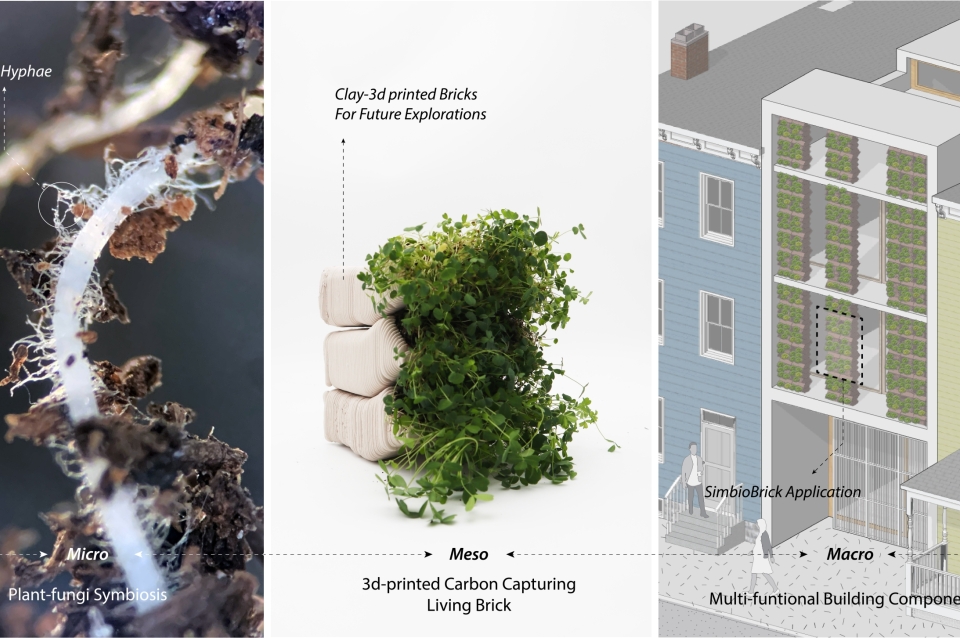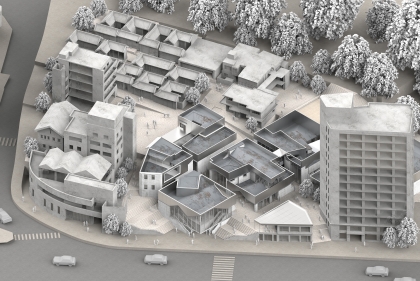June 14, 2024
Fungi on The Front Lines Against Environmental Injustice, Dr. Laia Mogas-Soldevila
By Xime Trujillo

The research community is harnessing the symbiotic properties of plants and fungi roots (left). Their living architectural system involves a 3D-printed brick (center) that encases mycorrhizal fungi and alfalfa to promote plant growth while also sequestering carbon and potential soil and air toxins, generating a flexible and beneficial building materials (right).
Close
The research community is harnessing the symbiotic properties of plants and fungi roots (left). Their living architectural system involves a 3D-printed brick (center) that encases mycorrhizal fungi and alfalfa to promote plant growth while also sequestering carbon and potential soil and air toxins, generating a flexible and beneficial building materials (right).
“Symbiotic architecture,” using bricks that support a thriving relationship between plants and fungi, can lead to a number of environmental—and environmental justice—benefits.
A “living brick” captures carbon by enhancing plant-fungi symbiotic association. A 3D-printed clay cassette includes a sufficient watering system and porous surfaces for drainage and ventilation. The porous surfaces also allow plant roots and mycorrhizal fungi to expand throughout the entire assembly.

 View Slideshow
View Slideshow



